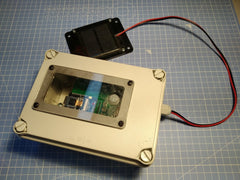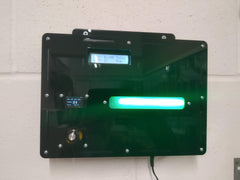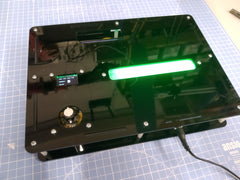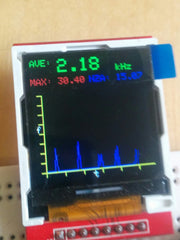Solar E-Paper Display
Posted by Matthew Little on
I wanted to make an E-Paper display that would run continuously without the hassle of recharging, so wanted to power it with a small solar panel. I had both my E-Ink display kit and my solar charger kit, so I decided to put them together to create a solar powered E-Ink display. This worked great and, with a few display updates every day, will... Read more
Halloween Pumpkin Solar Lights
Posted by Matthew Little on
Add spooky solar powered effect to you carved pumpkin lantern! If you order our Jam Jar Solar kit then, until Halloween, we will also provide four red LEDs which can be used to add a spooky glowing lights to your carved pumpkin. This kit provides a solar powered light that automatically turns on at dusk to give a red glowing... Read more
Prototyping a Wildlife Camera
Posted by Matthew Little on
Updated 3/7/2025 with new firmware. This blog post covers the main design choices and prototyping stages from developing a wildlife camera unit. I had seen the ESP32-CAM, which is based on the ESP32 microcontroller with wifi module. It's incredibly low cost and does some amazing things (including face recognition) with the example code other people have written. I got hold of... Read more
- 2 comments
- Tags: citizen science, environment, ESP32, experiment, hack, wildlife
Workshop Environmental Monitoring Project
Posted by Matthew Little on
I have built an environmental monitoring unit for my workshop. This measures: Air Temperature, Humidity & Pressure PM2.5 and PM10 Particulate values Radiation levels It shows the data on a small OLED screen. There is a large LED RGB display which changes colour if data goes above warning levels. This unit sends data to AdafruitIO via MQTT messages. This is all... Read more
- 0 comment
- Tags: Cheeseboard, citizen science, education, educational, esp8266, experiment, hack, wifi
Monitoring Radiation with the CheeseBoard
Posted by Matthew Little on
This post covers adding a radiation sensor (Geiger counter) to my environmental monitoring system. A while ago I had purchased a NETIO GC10 v2.4 Geiger Counter. This measures Beta and Gamma radiation and has a serial output, at 9600 baud. The unit was designed in the aftermath of the Fukushima disaster as a low cost way for monitoring radiation... Read more
- 0 comment
- Tags: Cheeseboard, citizen science, education, esp8266, experiment, hack, wifi
Adding Headphones to Our Bat Listener
Posted by Matthew Little on
Adding a headphone output socket to the bat listener has been on my list of things to do for far too long! It turns out it's quite simple to do. Replacing the speaker with a 100 ohm to the left and right channels of a headphone jack socket. The output is mono, so the same output goes to both ears.... Read more
- 0 comment
- Tags: bat, citizen science, hack
Bat Listener, Arduino and display!
Posted by Matthew Little on
Following on from our previous post on connecting the Bat Listener kit to and Arduino, here we show you how to add a small LCD screen to display frequency data and a 'sonograph'. Hopefully you have the Bat listener connected to the Arduino and are reading data onto the serial port. The next step is to add a small display... Read more







